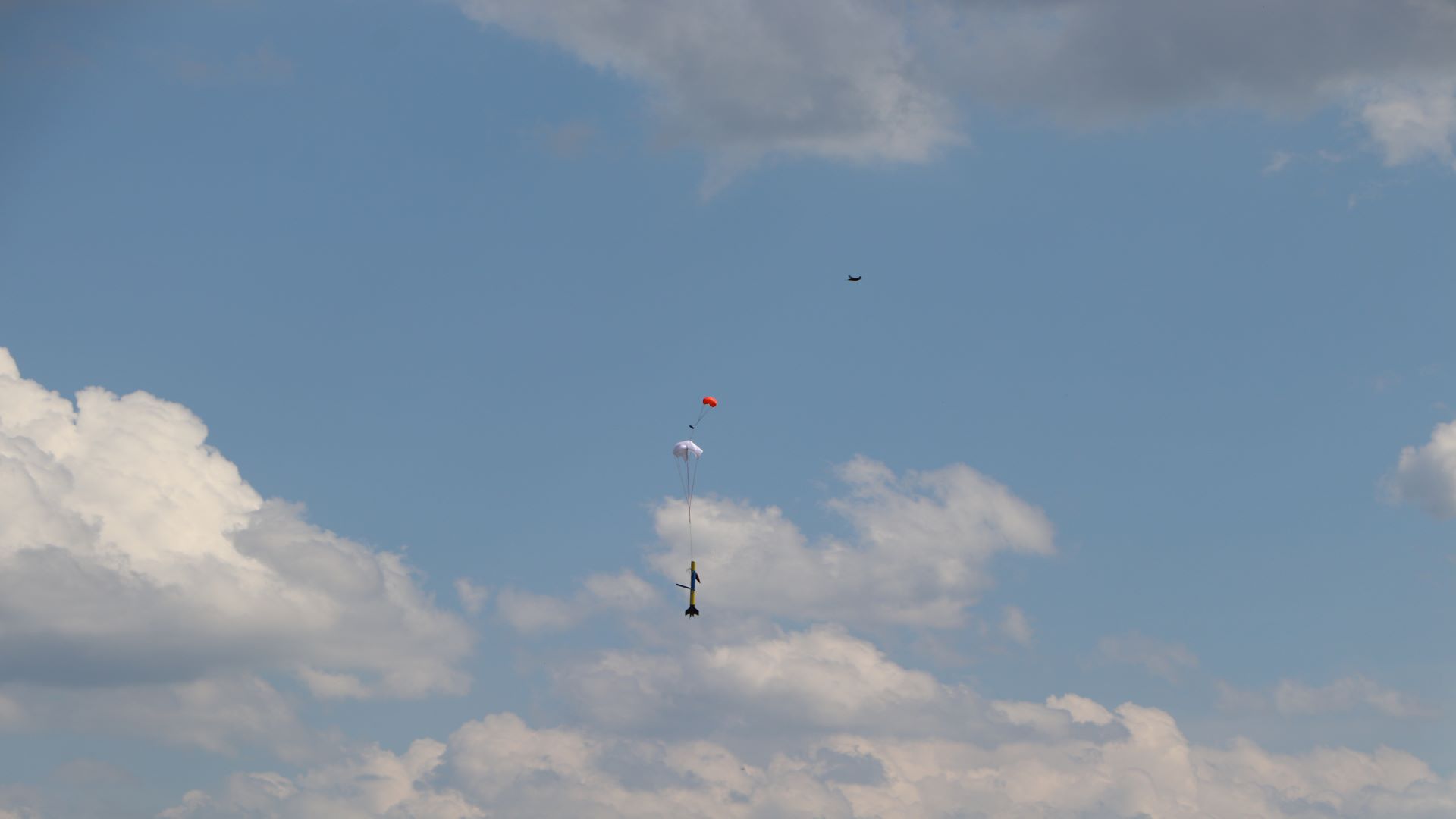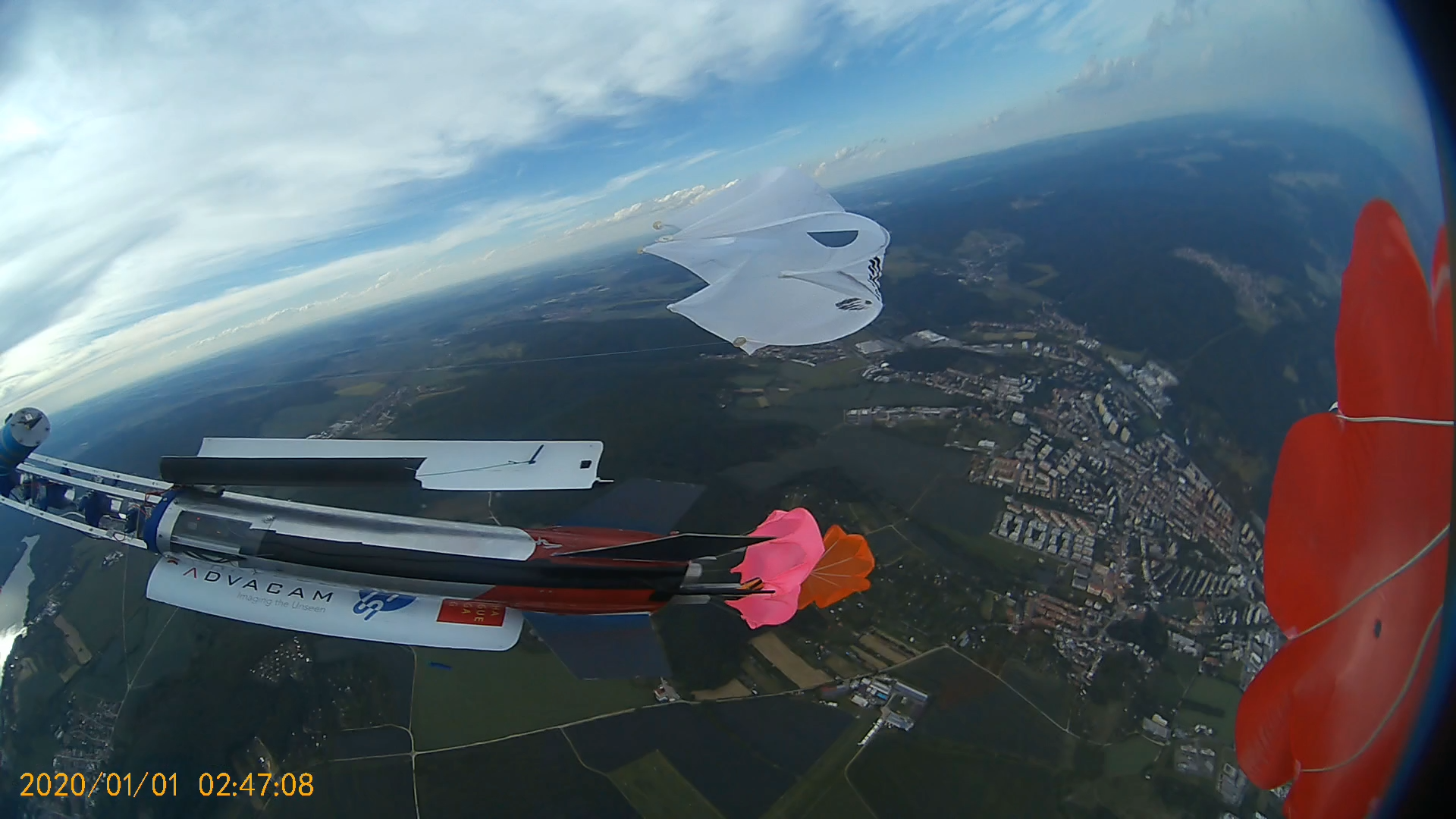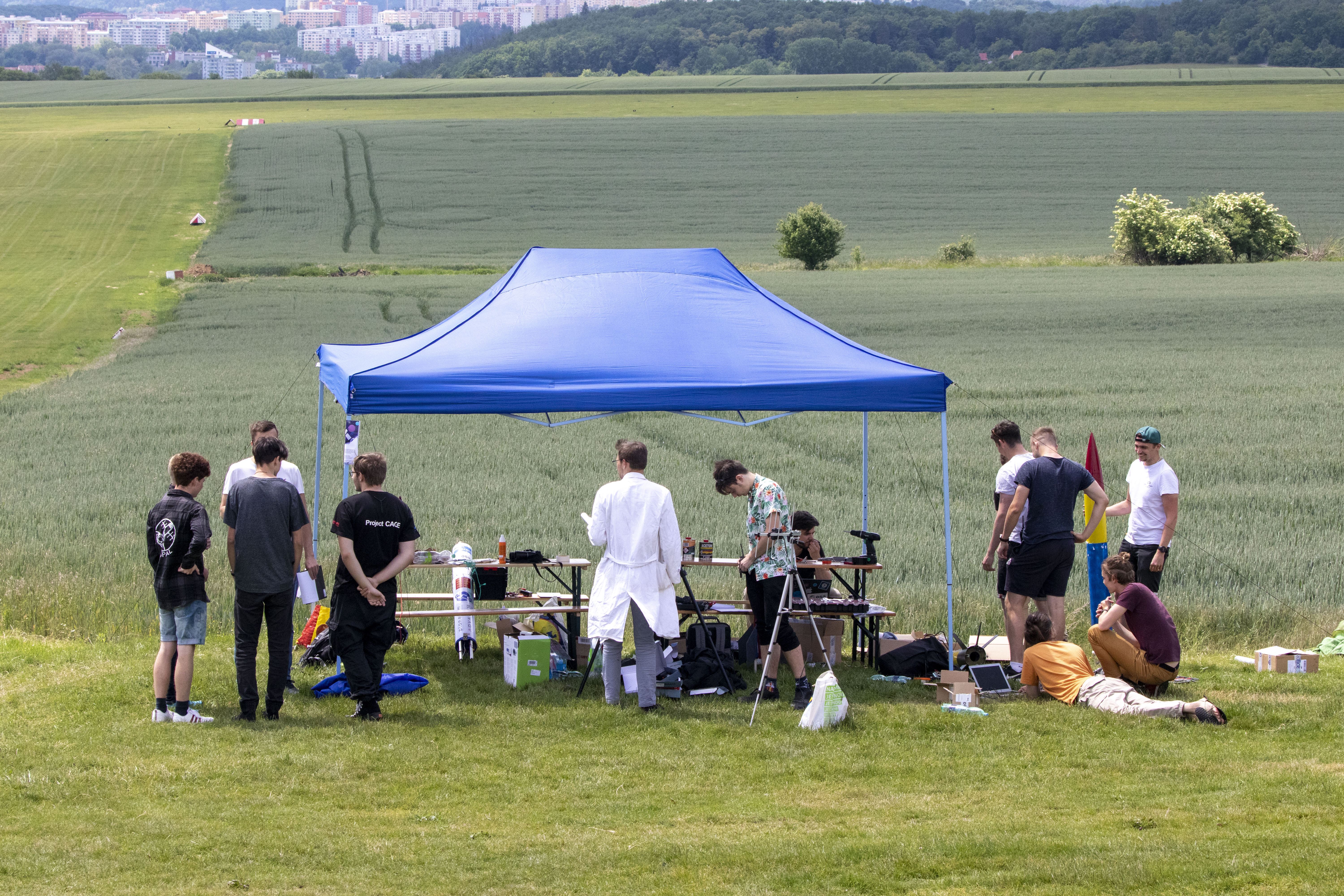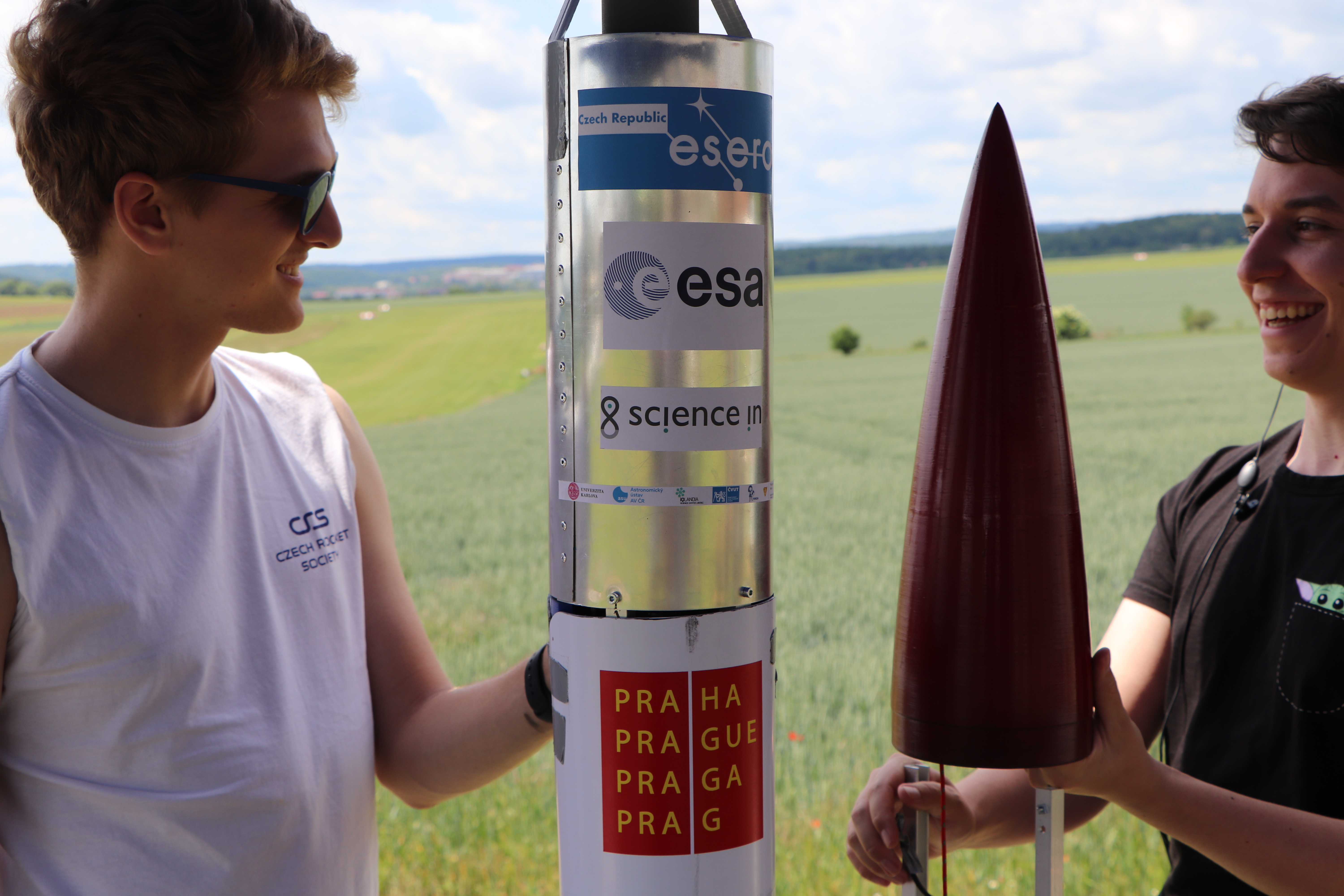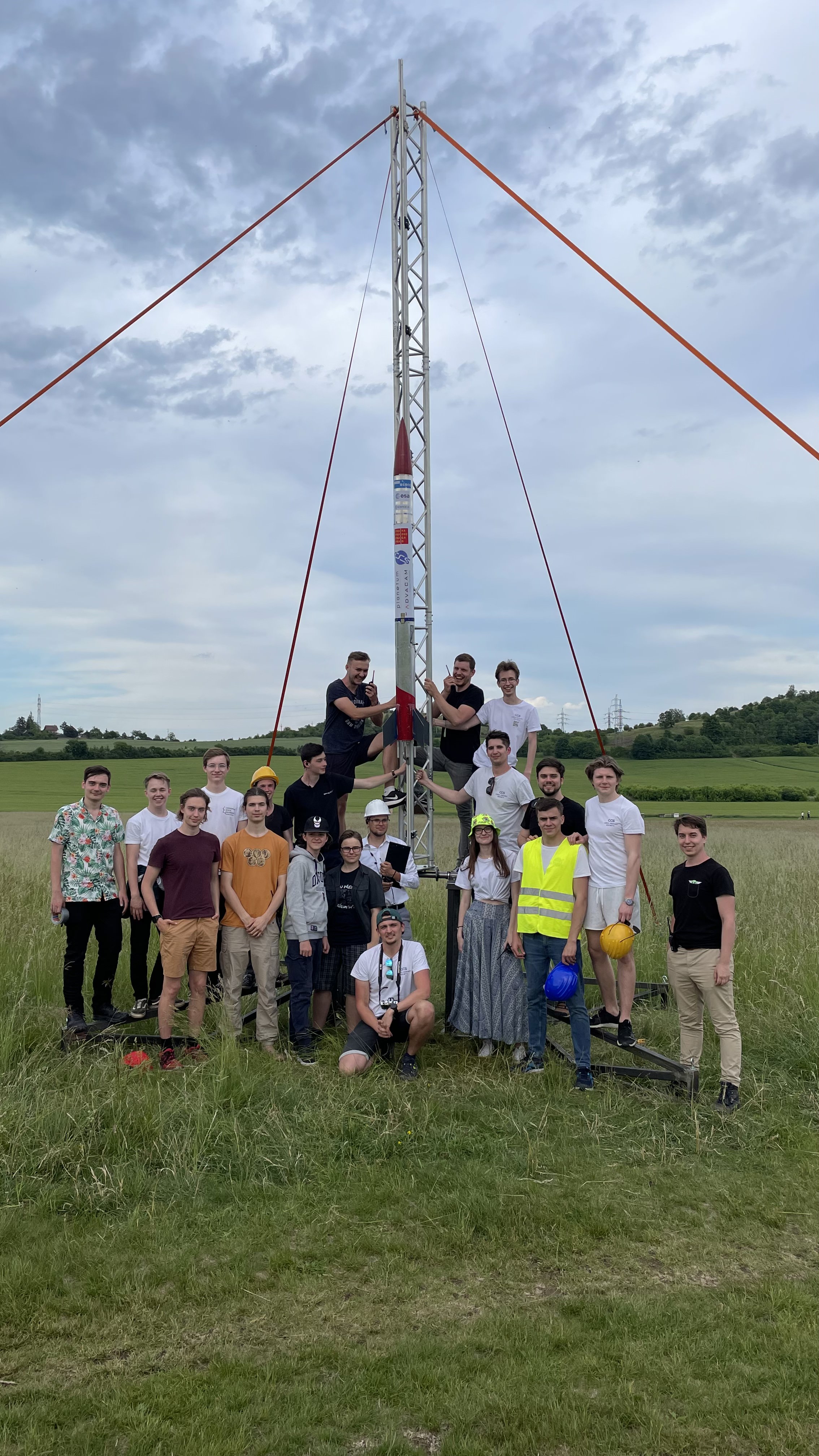The Sherpa project is the Society's latest rocket, developed in collaboration with ESERO, the educational office of the European Space Agency in the Czech Republic. Sherpa is designed for the CanSat competition, in which high school teams design mini-satellites that are launched to a height of 1km and then released, with the teams competing to collect the best possible data on the way back to Earth.
Sherpa is a 2.5-meter-long and 13 kg heavy rocket with a structure made of aluminum and PLA. It is designed to fly up to 1 km and release mini-satellites, with a total flight time of around 115 seconds. The rocket is powered by the same fuel as Stopař and can reach speeds of up to 180 m/s.
